Sagalassos is a captivating destination that offers a unique blend of history, culture, and natural beauty. With its stunning ruins, breathtaking landscapes, and rich archaeological heritage, it promises an unforgettable experience for those who venture off the beaten path. Whether you’re a history enthusiast, a nature lover, or simply seeking a tranquil escape, Sagalassos has something to offer everyone. So pack your bags, embark on an adventure, and discover the wonders of this ancient city in Turkey!
Sagalassos Ancient City Photos
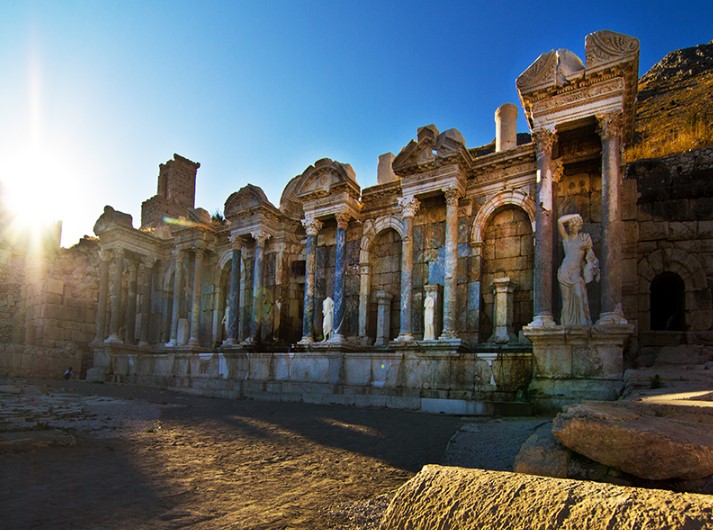
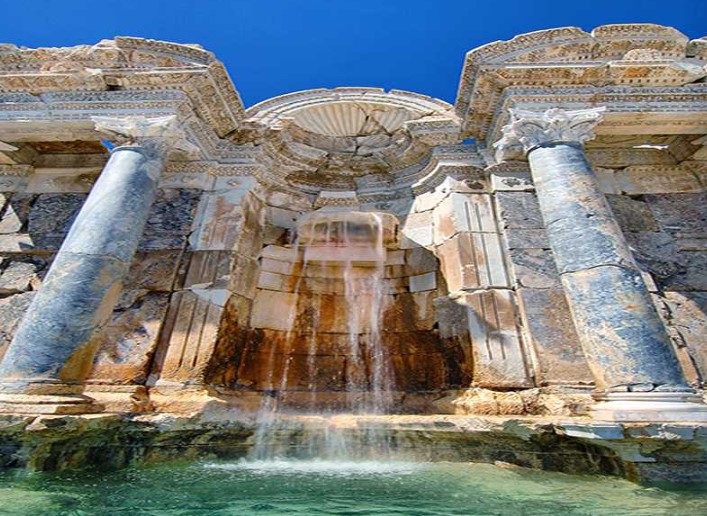
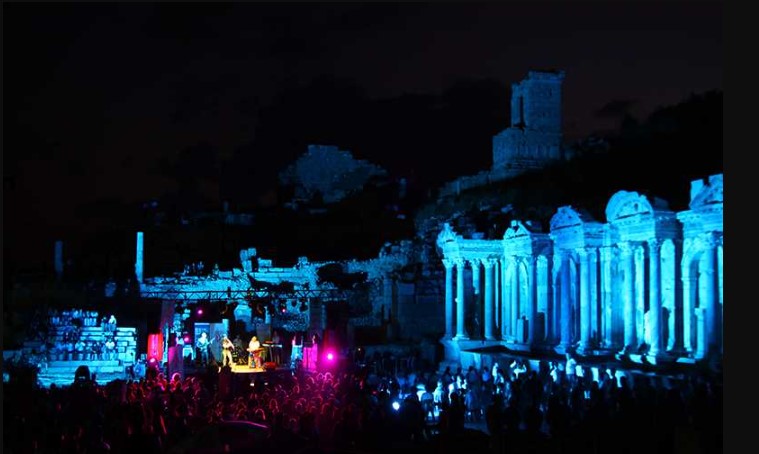
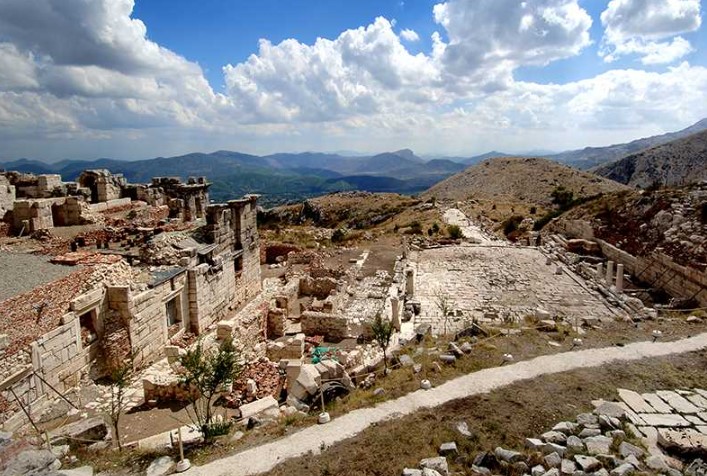
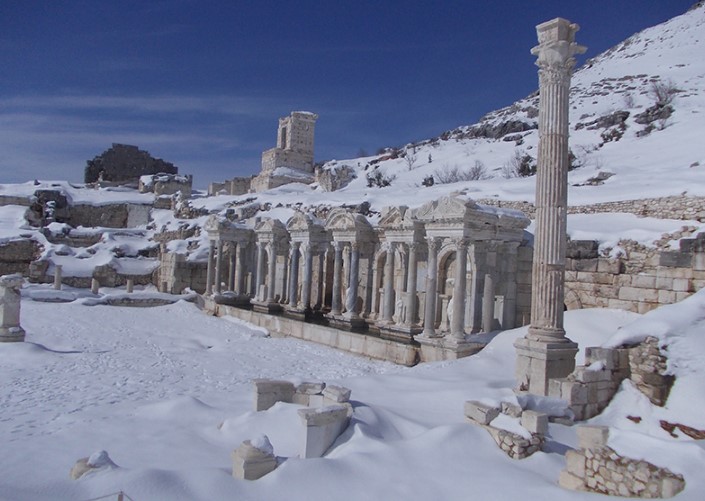
Headlines
Exploring the Ancient Wonders of Sagalassos: A Hidden Gem in Turkey
Perched majestically on the slopes of the Taurus Mountains in southwestern Turkey, Sagalassos is an ancient city that offers a captivating glimpse into the past. Known for its remarkable ruins, stunning landscapes, and rich history, Sagalassos is a hidden gem that is often overlooked by tourists. This archaeological site, once a thriving hub of civilization, is now a UNESCO World Heritage Site candidate, attracting history enthusiasts, nature lovers, and adventure seekers alike.
Location and How to Get There
Sagalassos is located in the Burdur Province, near the town of Ağlasun. The site’s elevation of approximately 1,500 meters (4,900 feet) above sea level provides breathtaking views of the surrounding landscape, including the picturesque Lake Burdur.
- By Air: The nearest major airport to Sagalassos is Isparta Süleyman Demirel Airport (ISB), located about 40 kilometers away. Domestic flights are available from Istanbul and Ankara. From the airport, you can rent a car or take a taxi to reach Sagalassos.
- By Bus: Intercity buses operate regularly to Burdur from various cities, including Antalya, Isparta, and Denizli. From Burdur, you can take a local bus or taxi to Ağlasun, where Sagalassos is located.
- By Car: Renting a car is a convenient option, especially if you want to explore the surrounding areas. The roads are generally well-maintained, offering scenic drives through the mountains and valleys.
Legends and Meaning of the Sagalassos
The name “Sagalassos” is believed to be derived from the Phrygian word “sagal,” meaning “a place to stop or rest.” The city is steeped in legends, with one of the most famous being associated with the hero of the Trojan War, Achilles. According to local folklore, Sagalassos was founded by a group of Greek settlers who were led by a companion of Achilles, and it was said to be blessed by the gods.
Another legend states that the city was named after a mythical king, Sagalas, who ruled the region and was known for his wisdom and bravery. This connection to mythology adds a layer of intrigue to the ancient site, making it even more appealing to visitors.
Highlights of the Sagalassos
Sagalassos is home to numerous highlights that showcase its historical and architectural significance:
- The Theatre: The ancient theatre of Sagalassos is one of the best-preserved structures in the city. Built in the 2nd century AD, it could accommodate around 5,000 spectators. The theatre offers stunning views of the surrounding mountains, making it a perfect spot for photography.
- The Basilica: This impressive basilica, dating back to the 5th century AD, features beautiful mosaics and intricate architectural details. It served as a center of Christian worship during the Byzantine period.
- The Nymphaeum: A monumental fountain dedicated to the water nymphs, the Nymphaeum is adorned with beautifully carved reliefs and statues. It showcases the importance of water in ancient Sagalassos.
- The Agora: The central marketplace of Sagalassos, the Agora was the hub of social and economic life in the city. The remains of shops, public buildings, and colonnades can still be seen today.
- The Antonine Fountain: This spectacular fountain, dedicated to Emperor Antoninus Pius, features intricate sculptures and reliefs that highlight the artistic talent of the period.
Why is it Worth a Visit to Sagalassos?
Visiting Sagalassos is a rewarding experience for several reasons:
- Rich History: The ancient city boasts a history that spans thousands of years, with evidence of settlement dating back to the Hellenistic period. Exploring the ruins allows visitors to connect with the past and understand the evolution of this remarkable site.
- Stunning Scenery: The picturesque location of Sagalassos offers breathtaking views of the surrounding mountains and valleys. The natural beauty of the area enhances the experience of visiting the ancient ruins.
- Archaeological Significance: Sagalassos is an important archaeological site, providing valuable insights into the culture and architecture of ancient civilizations. Ongoing excavations continue to reveal new discoveries, making it a fascinating place for history buffs.
- Fewer Tourists: Unlike more popular tourist destinations, Sagalassos is relatively uncrowded, allowing visitors to explore the site at their own pace and enjoy a more intimate experience.
- Cultural Experience: The region is rich in local culture, and visitors have the opportunity to engage with the friendly locals, taste traditional Turkish cuisine, and learn about the customs and traditions of the area.
Best Time to Visit and Dress Code for Sagalassos
The best time to visit Sagalassos is during the spring (April to June) and autumn (September to November). During these months, the weather is mild and pleasant, making it ideal for exploring the archaeological site and enjoying outdoor activities. Summer can be hot, especially in July and August, while winter may bring cold temperatures and occasional snowfall.
While there is no strict dress code for visiting Sagalassos, it’s advisable to dress comfortably and appropriately for outdoor activities:
- Comfortable Footwear: Wear sturdy walking shoes or hiking boots, as the terrain can be uneven and rocky.
- Layered Clothing: Dress in layers to accommodate temperature changes throughout the day. Mornings can be chilly, while afternoons may be warmer.
- Sun Protection: Bring a hat, sunglasses, and sunscreen to protect yourself from the sun, especially during the warmer months.
Working Hours and Fees for Sagalassos
Sagalassos is generally open to visitors year-round, but it’s advisable to check for any seasonal variations in opening hours:
- Summer (April to October): 8:00 AM to 7:00 PM
- Winter (November to March): 8:00 AM to 5:00 PM
As of the latest information, the entry fee for Sagalassos is approximately 50 Turkish Lira (around $2.50). Prices may vary, so it’s best to check for updates before your visit.
Sagalassos Ancient City Structure and Design
The architectural style of Sagalassos reflects its rich history and cultural influences. The city was designed with a blend of Hellenistic, Roman, and Byzantine architectural elements, creating a unique urban landscape.
1. The Theatre
The theatre is one of the most impressive structures in Sagalassos. Built into the mountainside, it features a semi-circular seating area and a well-preserved stage. The use of local stone gives it a rustic charm, and the acoustics are remarkable, allowing for excellent sound quality during performances.
2. The Basilica
The basilica is characterized by its grand entrance and intricate mosaics. The interior features columns and arches that support the roof, creating an airy atmosphere. The use of colorful tiles and detailed artwork showcases the artistic skills of the period.
3. The Nymphaeum
The Nymphaeum is a stunning example of Roman architecture. The structure features a series of niches adorned with statues and reliefs, and the flowing water from the fountain created a serene ambiance. The careful design and attention to detail highlight the importance of water in the daily lives of the inhabitants.
4. The Agora
The Agora is the heart of Sagalassos, where social and commercial activities took place. The layout includes a central open space surrounded by colonnades and shops. The remains of public buildings and sculptures can still be seen today, providing insight into the daily life of the ancient inhabitants.
5. The Antonine Fountain
The Antonine Fountain is a masterpiece of Roman art, featuring intricate carvings and sculptures. The design reflects the grandeur of the Roman Empire and the significance of public fountains in ancient cities.
History of the Sagalassos
Sagalassos has a rich and diverse history that dates back to at least the Hellenistic period (3rd century BC). The city was initially settled by a group of Greek colonists and flourished under the influence of the Roman Empire.
Ancient Settlement
The earliest evidence of settlement in Sagalassos dates back to the 3rd millennium BC, with archaeological findings indicating that the area was inhabited by the Phrygians and later the Greeks. The city was strategically located along trade routes, contributing to its growth and prosperity.
Roman Period
Sagalassos reached its peak during the Roman period when it became an important administrative and cultural center. The city was known for its impressive architecture, including temples, theatres, and public buildings. The construction of the theatre, basilica, and Nymphaeum during this time reflects the city’s significance in the region.
Byzantine Era
With the decline of the Roman Empire, Sagalassos transitioned into the Byzantine period. The city continued to thrive as a center of Christianity, with the construction of churches and religious buildings. The basilica and other structures from this era highlight the city’s continued importance.
Decline and Abandonment
By the 7th century AD, Sagalassos began to decline due to a combination of factors, including invasions and changes in trade routes. The city was eventually abandoned, and its ruins were left to the elements for centuries.
Modern Excavations
Excavations at Sagalassos began in the late 20th century and continue to this day. Archaeologists have uncovered numerous artifacts, structures, and inscriptions that provide valuable insights into the city’s history and culture. The ongoing excavations are shedding light on the daily lives of its ancient inhabitants and the architectural achievements of the time.
Sagalassos Ancient City Nearby Attractions
Sagalassos is surrounded by several attractions that enhance your visit to the region:
1. Lake Burdur
Located just a short drive from Sagalassos, Lake Burdur is a beautiful destination for nature lovers. The lake offers opportunities for birdwatching, hiking, and picnicking. The scenic views of the surrounding mountains make it a perfect spot for relaxation.
2. Ağlasun
The nearby town of Ağlasun is known for its traditional Turkish architecture and local culture. Visitors can explore the charming streets, sample local cuisine, and interact with the friendly residents.
3. Kremna
The ancient city of Kremna is located about 30 kilometers from Sagalassos. It features well-preserved ruins, including a theatre, temples, and a necropolis. Kremna is less crowded than Sagalassos, providing a peaceful atmosphere for exploration.
4. Pisidia Antioch
Another nearby archaeological site, Pisidia Antioch, offers a glimpse into the ancient Roman city that was once a significant center of trade and culture. The remains of temples, theatres, and public buildings can be explored.
5. Termessos
Termessos is an ancient city located in the Taurus Mountains, known for its stunning location and well-preserved ruins. The site features a theatre, temples, and a necropolis, all set against a backdrop of breathtaking natural beauty.
Interesting Facts About the Sagalassos
- Architectural Marvel: Sagalassos is known for its well-preserved ruins, which showcase the architectural styles of the Hellenistic, Roman, and Byzantine periods.
- Breathtaking Views: The city’s elevated position offers spectacular views of the surrounding mountains and valleys, making it a photographer’s paradise.
- Ongoing Excavations: Archaeological excavations at Sagalassos have been ongoing since the late 1990s, revealing new artifacts and structures that contribute to our understanding of the ancient city.
- Cultural Heritage: Sagalassos is a UNESCO World Heritage Site candidate, recognized for its cultural and historical significance.
- Water Management: The engineering and water management systems in Sagalassos, including aqueducts and fountains, demonstrate the advanced technology of the ancient inhabitants.
Tips for Visitors
- Plan Your Visit: Research and plan your visit in advance to make the most of your time at Sagalassos. Consider hiring a local guide for a more enriching experience.
- Wear Comfortable Shoes: As the terrain can be uneven and rocky, wear sturdy and comfortable shoes for walking and exploring the ruins.
- Bring Water and Snacks: There are limited facilities on-site, so it’s advisable to bring water and snacks to stay hydrated and energized during your visit.
- Capture the Moments: Don’t forget your camera! The stunning landscapes and ancient ruins provide plenty of opportunities for photography.
- Respect the Site: As an archaeological site, it’s essential to respect the ruins and follow any guidelines provided by site management to help preserve the history for future generations.
Is the Museum Pass Valid for Sagalassos Ancient City?
As of now, the Museum Pass (Müze Kart) is not valid for entry to Sagalassos specifically. However, if you plan to visit multiple archaeological sites and museums in Turkey, the pass can be a worthwhile investment for other locations.
Frequently Asked Questions
1. What is the best time to visit Sagalassos?
The best time to visit is during the spring (April to June) and autumn (September to November) when the weather is mild and perfect for exploring.
2. How do I get to Sagalassos from Isparta?
You can take a taxi or rent a car to reach Sagalassos from Isparta, which is about 40 kilometers away. Alternatively, you can take a bus to Burdur and then a local bus or taxi to Ağlasun.
3. Is Sagalassos crowded with tourists?
Sagalassos is relatively uncrowded compared to other popular tourist destinations in Turkey, allowing for a more peaceful and intimate experience.
4. Are there facilities available at Sagalassos?
While there are limited facilities on-site, it’s advisable to bring your own water and snacks. There are restrooms available, but they may not be extensively maintained.
5. How much does it cost to enter Sagalassos?
The entry fee for Sagalassos is approximately 50 Turkish Lira (around $2.50), but it’s best to check for the latest information before visiting.
